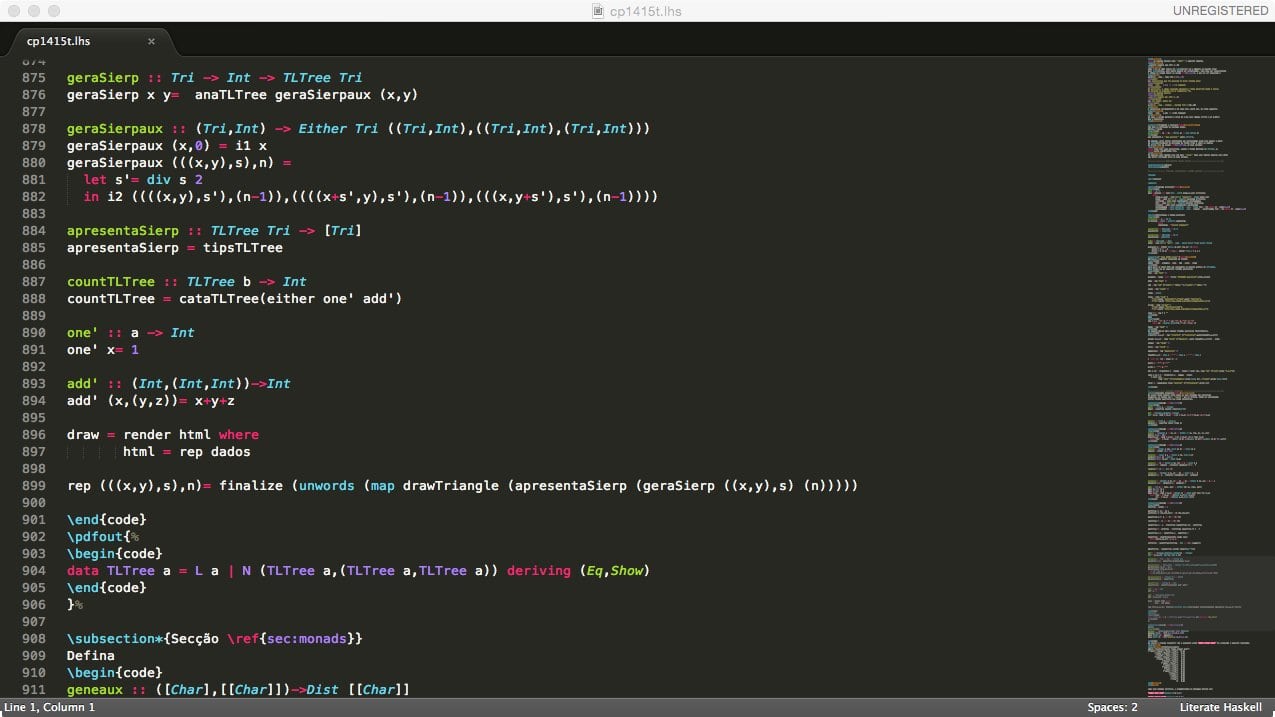

In January 2003, a revised version was published as Haskell 98 Language and Libraries: The Revised Report. In February 1999, the language standard was originally published in a report called The Haskell 98 Report. The committee expressed satisfaction in creating extensions and variants of Haskell 98 from the addition and incorporation of experimental attributes.
#Use of haskell programming language portable
In late 1997, the series culminated in Haskell 98, with the intention of specifying a more stable and portable version of the language accompanied by a standard teaching library, and as a basis for future extensions. The committee’s efforts resulted in a series of language definitions (1.0, 1.1, 1.2, 1.3 and 1.4). The first version of Haskell (“Haskell 1.0”) was defined in 1990. From 2006, the process of defining a successor to the standard 98, informally known by Haskell ′ (“Haskell Prime”), began. The language continues to evolve, with Hugs and GHC implementations being considered the de facto standards. This pattern was revised in January 2003. Later efforts culminated in Haskell 98, published in January 1999 and which specifies a minimal, stable and portable version of the language and the library for teaching. Version 1.1 followed in August of the following year, version 1.2 in March 1992, version 1.3 in May 1996 and version 1.4 in April 1997. The first version of Haskell was defined on April 1, 1990.

In September 1987, a Functional Programming Languages and Computer Architecture (FPCA ’87) conference was held in Oregon. Even after two years, Miranda was still the most used, but it was not in the public domain.

After the release of Miranda in 1985, several other functional languages of non-rigid semantics proliferated, such as Lazy ML, Orwell, Alfl, Id, Clean, Ponder and Daisy (a Lisp dialect ). Efforts in this area included graph reduction techniques and the possibility of a radical change in von Neumann’s architecture. The concept of lazy assessment has been widespread in academia since the late 1970s. It is a language that focuses on reaching solutions to mathematical problems, clarity, and easy to maintain in codes, and has a variety of applications and although simple, it is very powerful. It is based on a programming style in which more emphasis is placed on what should be done (what) at the expense of how it should be done (how). Widely used in academia, it is a relatively new language, derived from other functional languages, such as Miranda and ML. Haskell is the functional language on which most research is currently carried out. Its latest semi-official standard is Haskell 98, designed to specify a minimal and portable version of the language for teaching and as a basis for future extensions. As a functional language, the primary control structure is the function the language is based on the observations of Haskell Curry and his intellectual descendants. Haskell is a purely functional, general-purpose programming language, named after the logical Haskell Curry.


 0 kommentar(er)
0 kommentar(er)
